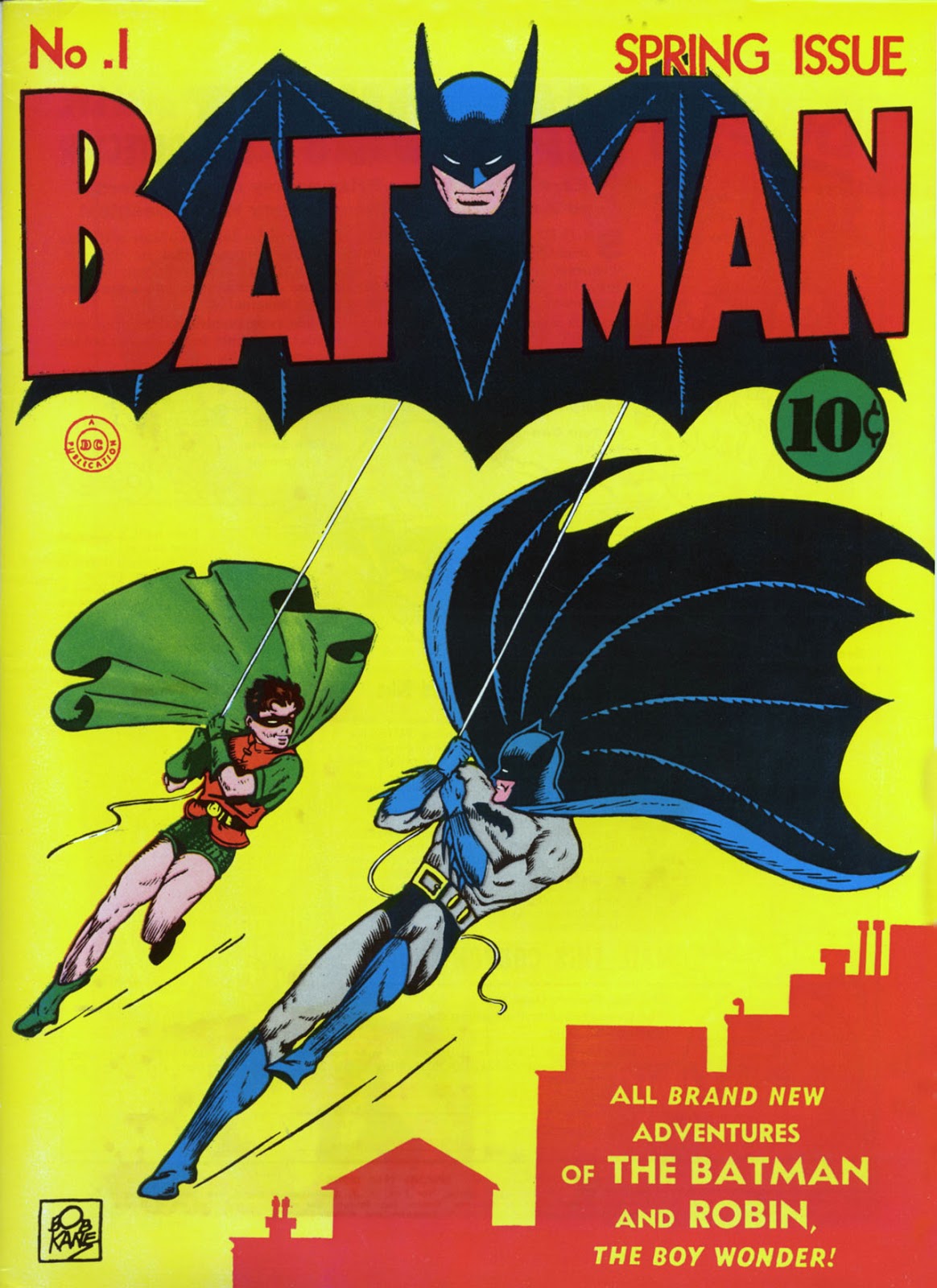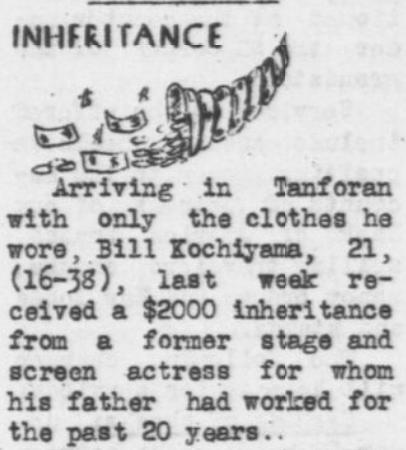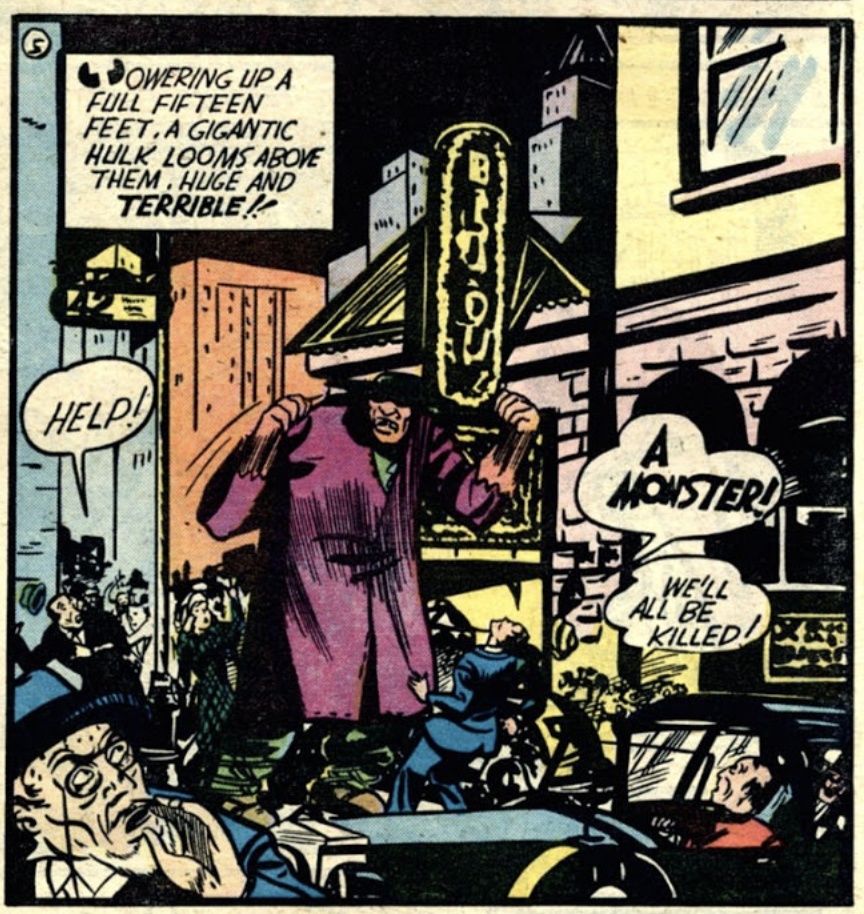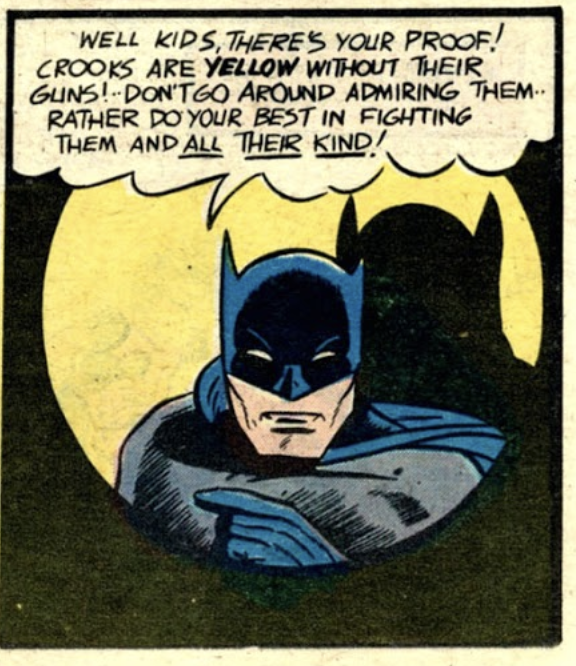
Though Batman debuted as a character in Detective Comics #27 in the spring of 1939, he didn’t get a solo book until spring of 1940’s Batman #1. By then, much of what makes up Batman had already been established in the pages of Detective Comics: his origin story, his relationship with Robin and his fiancee Julie, and a variety of other apocryphal Bat-things. And while Golden Age Batman presented a lot of things that would remain at the core of Batman’s character until today, early Batman was one weird dude. Pre-gritty ’70s Batman rebirth, pre-label-wide comic book continuity, early Batman just really loved smashing the living hell out of gangsters and thieves. And he was a bit of a horndog, too.

In Batman’s first title outing, he fights The Joker, Hugo Strange and his mentally ill mutant goons, and The Cat (later simply called Catwoman), in four separate tales. Batman #1 begins with a brief retelling of Batman’s origins reprinted from Detective Comics; in this familiar version, a bat flies through his mansion’s open window as he ponders what horrifying form to take to battle cowardly, superstitious criminals – himself demonstrating a superstitious belief in omens. The irony is lost on Mr. Wayne.

The Joker makes his very first comic appearance by announcing various murders and robberies on the radio before he commits them, generally targeting rich people with various jewels : Henry Claridge and his famous family diamond, and Jay Wilde’s hilariously-named Ronkers Ruby. Of course, the trick is that the Joker has already secretly committed these crimes and only reveals the trick at the chosen time, or engineered ingenious ways to still commit them while the cops are guarding the intended targets. Blow darts, toxic gas, and a few real bullets fly around, leaving victims grimacing with hideous mock-smiles, establishing Joker’s signature moves all the way back in 1940.

Interestingly, the Joker is described as having a “changeless, mask-like face” with hate-filled eyes, which only breaks into a “ghastly grin” when contemplating murder; he’s not at all as animated as the clownish persona he’d later adapt. He’s a fairly refined man of wealth and has a pretty fancy office to boot, decked out with busts, an ornate chair, and a tiger skin rug. The issue portrays him as a pretty standard gangster, but an especially hideous one, with a face inspired by the film The Man Who Laughs. Later on, it’s revealed that The Joker also has a lab hidden beneath a local cemetery, adding to his initial ghoulishness. He’s a man completely without humor, and it’s actually Batman who drops more quips than the Clown Prince of Crime.

Get it? Because Batman jumped onto the car. Side note: 1940 was indeed a leap year. Whether or not this actually increases Batman’s jumping abilities is undecided.
Batman is soon bested in a fistfight with The Joker and knocked off a bridge, allowing The Joker to escape in his fancy red car. It’s unusual to see Batman get his butt kicked by anyone, but generally, it’s reasoned that Joker’s fighting style is so unpredictable that Batman just can’t predict what’s going to happen next. At least that’s the argument in favor of full-on insane Joker; this Joker just punches Batman into oblivion unceremoniously… and that’s after Batman basically trips coming down a set of stairs and accidentally reveals himself to a room full of thugs. It’s safe to say that Golden Age Batman is a total freaking goof, in spite of being a “black cloud of avenging horror” or however Bill Finger and Bob Kane describe him in any given week.
And then, Batman’s dumbest invention is revealed.
While Batman himself is monitoring the murder of a judge that he completely fails to stop, he notices that Robin has wandered off to follow a lead. At this point, the idea of a radio watch hadn’t even been imagined yet; that gadget would appear in Dick Tracy in 1946. So, for instances when there’s no reasonable way to communicate with Robin over a distance, and shouting is out of the question, genius inventor Bruce Wayne came up with the worst possible way to track Robin (and himself, if need be) : ink pad shoes. Anywhere Robin and Batman go, they leave a trail of invisible ink footprints that can be revealed with an “infra-red” flashlight. Or, in layman’s terms, a heat ray. Or, like, a warm day.

Unless ‘heat’ is a proprietary WayneTech invention, it wouldn’t be hard to figure out where Batman and Robin shack up or where they stop to pee. But that’s a job for another day. No word of when Batman came to his senses, but it’s not the last time his shoes would save the day in this issue.
Joker captures Robin in an abandoned house and plans to Joker-fy him using his toxin, which is something that happens to various Robins repeatedly throughout Batman’s history. After a brief tussle in which Joker again escapes yet again, Batman is infected with Joker gas, but manages to simply shake it off without nay kind of antidote, using only his “amazing recuperative powers.” Which is a bit of a butt reason. His poison-fighting powers aren’t quite superhuman in scope, but Bruce Wayne is known for having peak physical prowess and abilities, but even now, he’s given the completely unnatural ability to just will away toxins and injuries, which is something that comes up again in a very meaningful way during the Venom storyline, in which Batman wills away his addiction to performance-enhancing drugs.
As the building bricks of Batman are being built, he’s alternately presented as an attainable model human being to aspire to be… and also a a guy with slightly supernatural, impossible powers. You can’t just will away a snakebite, but this Batman, who lives just outside of the laws of science in the 1940s, can. No amount of pushups is gonna save you from the sting of a blue ringed octopus, though… unless you’re Batman.
Part one of the tale ends with Robin kicking Joker off a roof, and Batman saving his life… and punching his face in. Again, another very familiar scene.

Joker is imprisoned, and part one of the tale ends. Part two begins a little over a day later, when Joker unscrews two of his hollow teeth and mixes together some chemicals secreted inside them, causing an explosion large enough to blast through a prison wall. It’s disgusting and weird. During an ensuing museum heist targeting the fictional Cleopatra’s Necklace, Joker knocks out Batman once again, but this time with an axe, and escapes with the treasure. Officers find Batman unconscious and decide to unmask him… until Batman wakes up and beats the snot out of them as well and escapes in a hail of gunfire.
Commissioner Gordon sets up a trap for The Joker by advertising the value of yet another gem in the local paper. And while this seems like a bizarre plot device, it comes into play in a lot of Batman’s early stories; a newspaper advertises someone’s wealth, and they become a target. It almost seems like a device of pure fiction, but it’s not altogether unrealistic, and really happened in the ’40s, sometimes with full names and addresses.

And it’s not as though this is the kind of thing that ever stopped, either; Kim Kardashian’s Paris robbery was committed under extremely similar circumstances, and that was in 2016. Whether or not these 1940s newspaper announcements created unwitting targets is mostly lost to history, but as far as the pages of Batman #1, it’s a strangely realistic circumstance.
The whole tale wraps up when Joker is more or less caught off-guard, battles Batman and Robin, and accidentally stabs himself in the chest while Batman endlessly quips at him. It’s easy to see where the Joker got his routine.

The final pages reveal that The Joker is still alive, and Robin reminds everyone to not be a jerk, and also, to be a Nationalist – a common sentiment for the time, but maybe not so appropriate today.

Between the two Joker tales are two more stories, the first of which stars Hugo Strange, who earlier made his debut in Detective Comics #36. There, he built a fog machine to enable a crimewave by obfuscating the views of police officers, and angered by the intervention of Batman, he captured the hero to subject him to the worst punishment of all: a good whipping.

This time around, Strange escapes prison and, having been failed by normal goons, enlists the help of five residents of a local psych ward, whom he mutates, by way of a serum, into 15-foot tall, bulletproof, humanoid monsters of mayhem. Their only purpose is to break things and kill people, to lure Batman to Strange’s secret hideout, and to create a distraction to make future robberies easier for Strange.

As usual, Batman pursues the rampaging monsters and is trapped. He’s injected with Strange’s monster serum, and awakes just in time to blow up his jail cell Joker-style : with explosive chemicals he’s stored in his boot’s heels. At least in this case, Batman has the forethought to store explosive chemicals in different heels, rather than The Joker storing volatile compounds straight up in the same gross mouth.
With Batman now free, Strange is punched out a window into the ocean, three monsters are beaten, and Batman pursues two more escaped monsters. It’s here, in this otherwise innocuous Huge Strange story, that Batman notoriously breaks character. Genius scientist Bruce Wayne straight up murders some thugs by peppering their getaway vehicle with bullets from the Batplane, causing them to crash, before tying a rope around a monster’s neck and hanging him.

It’s not as though Batman causes an accidental death; he narrates the entire scene. He knows that he’s about to murder a few people, expresses some mild regret, and opens fire. The weirdness is made especially difficult by the cruel way that Batman executes a monster who began as a harmless mental patient, suffering from a mutation that he had almost definitely developed a cure for, but only used on himself.

After this ghastly scene, the final monster climbs to the top of a tower, where Batman gasses him and leaves him to fall to his death.
But Batman straight up killing people he doesn’t like isn’t all that unusual in this era; almost every early issue of Detective Comics features “The Bat-Man” as a murderer. In this first appearance, he slaps a guy into a vat of acid.

Two issues later, Batman leaves Doctor Death and his manservant Jabah to die in a fire that Batman himself starts; Jabah does not make it out alive. Jabah’s replacement, Mikhail, has his neck snapped by a swift kick from Batman in the next issue. Soon after that, Batman stakes a couple of vampires through their hearts. He even causes a plane crash that drowns a villain. It’s a straight up murder spree for young Batman. Anyone who says that Batman’s always had a code against killing probably hasn’t been murdered by Batman yet. Another Golden Age batman story ending in murder? Not actually a big deal.
The third tale in Batman #1 begins as a Robin solo adventure, with Dick Grayson in disguise as a waiter aboard a fancy cruise, where it’s been announced that yet another rich oldie will be wearing an extremely valuable necklace. Mrs. Travers meets her nephew Denny on board, and he’s accompanied by the elderly Miss Peggs. Number one, never trust a guy named Denny, and number two, never trust a guy who invites strange, elderly ladies onto boats.
Before long, the necklace is stolen, and Robin discovers a note indicating that both Denny and someone called The Cat are involved in the crime. Meanwhile, a group of seafaring thugs also appear in an attempt to steal the necklace. Chaos ensues, Batman pops in because he’s bored, and soon, all of the thugs are disarmed. It’s at this point that Batman stands back and watches gleefully as Robin breaks all of their bones.

Batman follows this up by breaking the fourth wall and reminding kids that criminals suck. And also, if a criminal doesn’t have a gun visible, you should fight them. Which sounds like an absolutely terrible idea. Sure, Robin and other kid sidekicks were introduced to comics so that young readers could read about someone relatable and positive, but actively inciting kids to go out an fight crime in 1940 was undoubtedly a lapse in judgment. And it wouldn’t be the last lapse in this tale.

Soon after, a fire alarm is pulled, allowing a surprisingly spry old Miss Peggs to escape, almost unseen. Batman immediately takes the chance to admire her physique.

Obviously, this woman is The Cat, whom Batman quickly unmasks, and recovers the missing necklace. Unfortunately, Batman is easily seduced, and on the boat trip back to the police, The Cat escapes. Robin attempts pursuit, but Batman “accidentally” stops him. Despite the fact that Bruce Wayne actually has a fiancee named Julie Madison (established in Detective Comics #31), he still holds a torch for this mysterious woman who just leapt overboard and caused untold amounts of chaos, and he’d hold it for the next 70+ years.

Despite the wonkiness of Batman’s first real issue, showcasing a clumsy Batman who lacks the sociopathic focus of a later Batman, and art that occasionally gets very weird, this is really where it all started. And an honorable mention of excellence has to be given to this masterfully illustrated panel. It’s claustrophobic, it’s unsettling, it’s emotive, and it’s full of subtle action all at once.

It’s a masterpiece, even if Batman’s debut isn’t perfect.
All comic images are copyright DC Comics and presented here for the purposes of criticism & commentary.
 C. David is a writer and artist living in the Hudson Valley, NY. He loves pinball, Wazmo Nariz, Rem Lezar, MODOK, pogs, Ultra Monsters, 80s horror, and is secretly very enthusiastic about everything else not listed here.
C. David is a writer and artist living in the Hudson Valley, NY. He loves pinball, Wazmo Nariz, Rem Lezar, MODOK, pogs, Ultra Monsters, 80s horror, and is secretly very enthusiastic about everything else not listed here.





